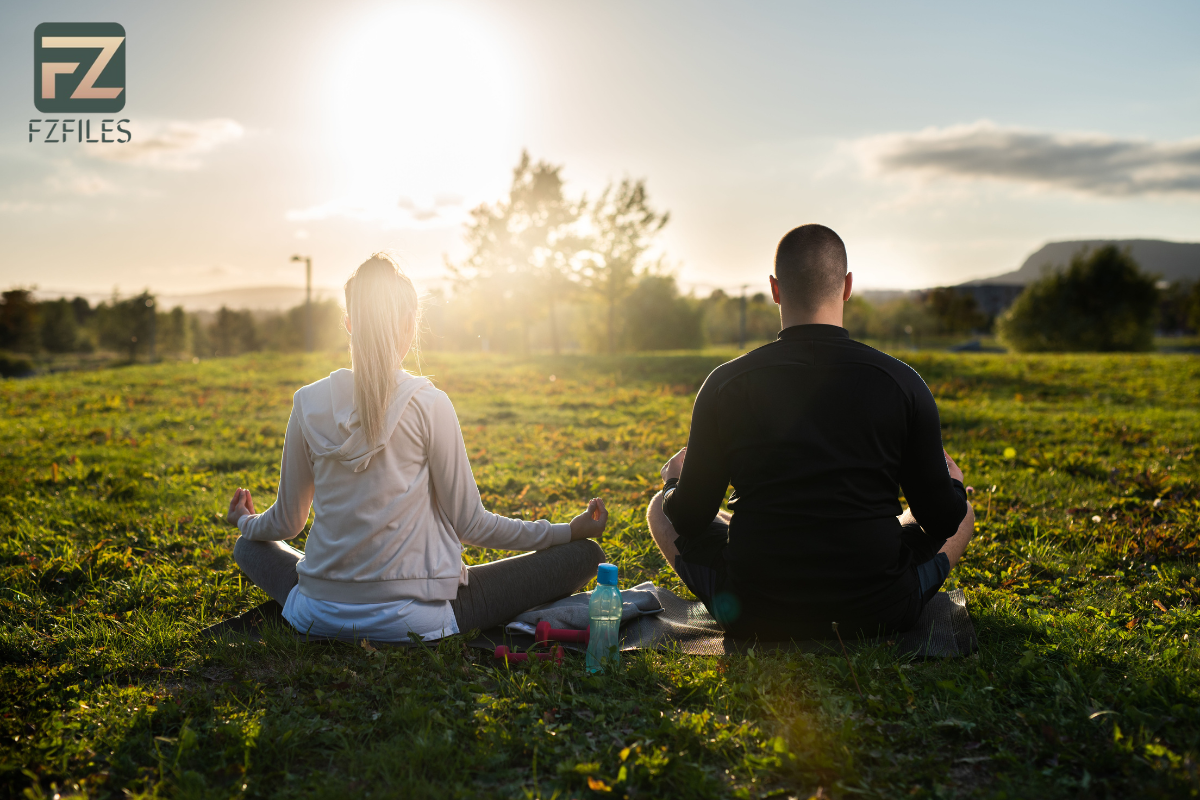Introduction to Mindfulness in Fitness
In today’s fast-paced world, the integration of mindfulness into fitness routines has emerged as a powerful trend. Combining physical exercise with mindfulness techniques offers a holistic approach to well-being that addresses both the body and the mind. In 2024, this synergy is more relevant than ever, as people seek ways to enhance their overall health and manage stress. This comprehensive guide explores the concept of mindfulness in fitness, its benefits, and practical ways to incorporate it into your workout routine.
Definition and Benefits
Mindfulness is the practice of being fully present and engaged at the moment, aware of your thoughts and feelings without distraction or judgment. When applied to wellness, care includes giving close consideration to your body, breathing, and development during exercise. This approach not only enhances the physical benefits of exercise but also promotes mental clarity and emotional stability.
Benefits of Mindfulness in Fitness
- Enhanced Physical Performance: By focusing on the present moment, athletes can improve their form, technique, and overall performance.
- Reduced Stress and Anxiety: Mindfulness practices reduce cortisol levels, helping to alleviate stress and anxiety.
- Improved Recovery and Injury Prevention: Being mindful of your body’s signals can help prevent overtraining and injuries.
- Greater Enjoyment of Exercise: Mindfulness can make workouts more enjoyable by fostering a deeper connection with your body and movements.
- Holistic Well-being: Integrating mindfulness into fitness routines promotes a balanced approach to health, encompassing physical, mental, and emotional aspects.

Top Mindfulness in Fitness Exercises
Mindfulness can be integrated into various fitness activities, from traditional workouts to specialized practices. Here are some top exercises to consider:
Mindful Movement Techniques
- Mindful Walking
Walking involves paying attention to the sensations of walking, including the movement of your legs, the feel of your feet on the ground, and your breath.
- How to Perform: Walk at a natural pace, focusing on each step. Notice the sensations in your feet and legs. Sync your breathing with your steps, taking deep breaths in and out.
- Mindful Running
Mindful running is about tuning into your body and breath, rather than focusing on speed or distance.
- How to Perform: Start with a warm-up walk, then begin running at a comfortable pace. Focus on your breathing, the musicality of your means, and the sensations in your body.
- Mindful Strength Training
This involves performing strength exercises with full awareness of your body and breath.
- How to Perform: During each exercise, focus on your form and the muscles being worked. Breathe deeply and slowly, coordinating your breath with your movements.
Mindfulness Yoga for Athletes
Yoga is a natural fit for mindfulness due to its emphasis on breath and body awareness. Athletes can benefit from incorporating mindfulness into their yoga practice to enhance performance and recovery.
- Yoga for Flexibility and Balance
These poses improve flexibility and balance while fostering mindfulness.
- Example Poses: Downward Dog, Warrior II, Tree Pose
- How to Perform: Focus on your breath and the alignment of your body in each pose. Hold each pose for several breaths, noticing the sensations in your muscles and joints.
- Restorative Yoga
Restorative yoga involves holding poses for extended periods to promote deep relaxation and recovery.
- Example Poses: Child’s Pose, Reclining Bound Angle Pose, Legs-Up-the-Wall Pose
- How to Perform: Use props like bolsters and blankets to support your body. Focus on your breath and let go of tension in each pose.
Stretching Routines with Mindfulness
Incorporating mindfulness into stretching routines can enhance flexibility and reduce the risk of injury.
- Dynamic Stretching
Dynamic stretches involve moving parts of your body through a full range of motion in a controlled manner.
- Example Stretches: Leg Swings, Arm Circles
- How to Perform: Focus on the movement and sensations in your body. Breathe deeply and stay present with each stretch.
- Static Stretching
Static stretches involve holding a stretch for an extended period, typically 15-60 seconds.
- Example Stretches: Hamstring Stretch, Quadriceps Stretch
- How to Perform: Hold each stretch, focusing on your breath and the sensation in your muscles. Relax into the stretch and avoid straining.
Integrating Mindfulness into Workouts
Incorporating mindfulness into your fitness routine can be done through pre- and post-workout practices, as well as during the workout itself. This ensures a holistic approach to exercise that benefits both the body and the mind.
Pre-Workout Mindfulness Practices
Pre-workout mindfulness practices help prepare your mind and body for exercise.
- Breathing Exercises: Spend a few minutes focusing on your breath. Practice deep breathing to calm your mind and increase oxygen flow to your muscles.
- Body Scan: Perform a quick body scan to check in with how your body feels. Notice any areas of tension or discomfort and adjust your workout accordingly.
During Workout Mindfulness Practices
Staying mindful during your workout enhances performance and reduces the risk of injury.
- Focus on Form: Focus on your structure and method. This helps prevent injuries and ensures you are getting the most out of your exercises.
- Breath Awareness: Keep your breath steady and controlled. Coordinate your breathing with your movements to maintain a rhythm and stay present.
Post-Workout Mindfulness Practices
Post-workout mindfulness practices aid in recovery and relaxation.
- Cool Down: Take time to cool down with gentle stretching and deep breathing. This helps your body transition from intense activity to a state of rest.
- Gratitude Practice: Reflect on your workout and express gratitude for what your body has accomplished. This fosters a positive mindset and reinforces the benefits of mindfulness in fitness.
Expert Advice
To maximize the benefits of mindfulness in fitness, it’s essential to follow expert advice and tips. Here are some recommendations from mindfulness and fitness professionals:
Tips for Improving Mindfulness in Fitness
- Start Small: On the off chance that you’re new to care, begin with short meetings and steadily increment the length.
- Create a Routine: Integrate care rehearses into your day to day everyday practice to regularly practice them.
- Use Guided Meditations: Guided meditations can help you stay focused and provide structure to your mindfulness practice.
- Be Patient: Care is an expertise that requires some investment to create. Show restraint toward yourself and perceive that progress might be continuous.
- Stay Consistent: Consistency is key to reaping the benefits of mindfulness in fitness. Aim to practice mindfulness regularly, even if only for a few minutes each day.
Advanced Techniques
For those looking to deepen their mindfulness practice in fitness, consider incorporating the following advanced techniques:
- Visualization
Visualization involves creating mental images of your desired outcomes, such as improved performance or recovery.
- How to Perform: Before your workout, take a few minutes to visualize yourself performing the exercises with perfect form and achieving your fitness goals.
- Mindful Eating
Careful eating includes focusing on the experience of eating, including the taste, surface, and smell of your food.
- How to Perform: Before and after your workout, eat mindfully by focusing on each bite, savoring the flavors, and listening to your body’s hunger and fullness cues.
Conclusion
Mindfulness in fitness offers a holistic approach to well-being that addresses both the body and the mind. By incorporating mindfulness practices into your workout routine, you can enhance physical performance, reduce stress, and promote overall health. In 2024, the focus on mindfulness in fitness continues to grow, reflecting a broader understanding of its importance in maintaining an active and balanced lifestyle. Start integrating mindfulness into your fitness routine today to experience its transformative benefits.

[…] fasting offers a scope of advantages that stretch out past weight reduction. From improved metabolic health to potential longevity, the […]